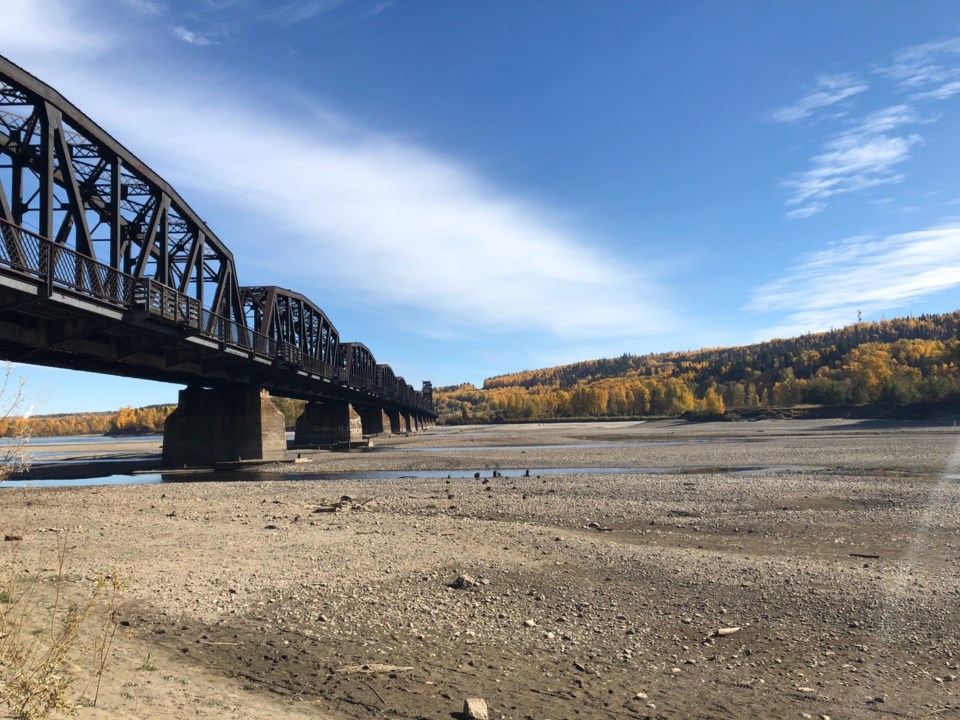The once flowing water under Prince George’s historic CN Rail Bridge has all but disappeared.
Particularly noticeable at the confluence of the Fraser and Nechako rivers near Cottonwood Island Park, the low water levels have made the sandy river bed a hot spot for explorers.
People have been enjoying the recent sunshine exploring the sandy river bed and even venturing out on foot to Goat Island.
But where has the water gone?
“There’s a couple of factors,” says Dave Campbell, head of the B.C. River Forecast Centre. “The snow melted quite early this year and that sort of shifted the melt cycle, in general, a few weeks early, but the bigger driver has been that it has been exceptionally dry throughout the region.”
Central and northern B.C. are currently facing drought conditions.
The Nechako River and the Upper Fraser River are under a Level 3 Drought Classification for very dry conditions. A Level 3 Classification is described as having potentially serious ecosystem or socio-economic impacts and requires voluntary conservation and restrictions.
“Certainly, for the last three months we have been seeing quite a bit less than normal rainfall through the headwaters, so that has been exasperating things,” says Campbell. “The dry weather is really pushing the low flows.”
Campbell says the River Forecast Centre has been tracking the flows of the Nechako and Fraser rivers upstream of Prince George for the last seven years, and the flows are the lowest they have ever been observed.
“We haven’t seen this in the seven-year history of monitoring that, so it certainly is exceptional.”
He says he doesn't expect the water levels to rebound anytime soon as snow and freezing conditions are expected in the coming months.
“There’s not very much likelihood that we are going to rebound much until we get into next year into the spring melt.”



